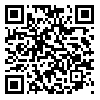Volume 9, Issue 3 (8-2022)
JROS 2022, 9(3): 173-180 |
Back to browse issues page
Download citation:
BibTeX | RIS | EndNote | Medlars | ProCite | Reference Manager | RefWorks
Send citation to:



BibTeX | RIS | EndNote | Medlars | ProCite | Reference Manager | RefWorks
Send citation to:
Yeganeh A, Ebrahimzadeh Babaki A, Bagheripour A. Investigation of Hypertrichosis After Casting of Limb Fractures in Patients Referred to the Orthopedic Department of Rasoul Akram Hospital in 2019. JROS 2022; 9 (3) :173-180
URL: http://jros.iums.ac.ir/article-1-2216-en.html
URL: http://jros.iums.ac.ir/article-1-2216-en.html
1- Department of Orthopedic, School of Medicine, Iran University of Medical Sciences, Tehran, Iran.
2- Iran University of Medical Sciences, Tehran, Iran.
2- Iran University of Medical Sciences, Tehran, Iran.
Abstract: (582 Views)
Background and Objectives: Acquired local hypertrichosis occurs unilaterally in the same organ, causing asymmetry and beauty-related issues. This study investigates the prevalence of hypertrichosis after the casting of limb fractures, addressing patient concerns, preventive measures, and timely treatment.
Methods: In this prospective cohort study, 82 patients who were hospitalized in the orthopedic department of Hazrat Rasul Akram educational, research and treatment complex in 2019 and required limb casting due to fractures or trauma were included. Demographic and clinical information of the patients were collected through interviews or by consulting the patient’s clinical file. The severity of the trauma and the presence of hypertrichosis were also determined by clinical examination.
Results: Out of a total of 82 participants in the study, 41(50%) were male and 41(50%) were female. The mean age was 41.04±22.14 years. The mean duration of casting was 4.65±1.02 weeks. Meanwhile, 80(97.6%) people had undergone plaster casting once; however, 43 people (52.4%) had minor fractures. The most commonly injured site was the distal tibia, accounting for 30.48% of cases. The patients with hypertrichosis and patients without hypertrichosis were the two study groups, and the mean age in each group was significantly different from the other (P=0.0001); however, no other significant relationships or differences were discovered (P>0.05).
Conclusion: The incidence of hypertrichosis in Iranian society is 8.5%, which is slightly lower compared to other societies. Younger patients in Iran are more susceptible to developing hypertrichosis after limb casting of broken limbs.
Methods: In this prospective cohort study, 82 patients who were hospitalized in the orthopedic department of Hazrat Rasul Akram educational, research and treatment complex in 2019 and required limb casting due to fractures or trauma were included. Demographic and clinical information of the patients were collected through interviews or by consulting the patient’s clinical file. The severity of the trauma and the presence of hypertrichosis were also determined by clinical examination.
Results: Out of a total of 82 participants in the study, 41(50%) were male and 41(50%) were female. The mean age was 41.04±22.14 years. The mean duration of casting was 4.65±1.02 weeks. Meanwhile, 80(97.6%) people had undergone plaster casting once; however, 43 people (52.4%) had minor fractures. The most commonly injured site was the distal tibia, accounting for 30.48% of cases. The patients with hypertrichosis and patients without hypertrichosis were the two study groups, and the mean age in each group was significantly different from the other (P=0.0001); however, no other significant relationships or differences were discovered (P>0.05).
Conclusion: The incidence of hypertrichosis in Iranian society is 8.5%, which is slightly lower compared to other societies. Younger patients in Iran are more susceptible to developing hypertrichosis after limb casting of broken limbs.
Type of Study: Research Article |
Subject:
Trauma
Received: 2022/06/22 | Accepted: 2022/07/21 | Published: 2022/08/1
Received: 2022/06/22 | Accepted: 2022/07/21 | Published: 2022/08/1
| Rights and permissions | |
 |
This work is licensed under a Creative Commons Attribution-NonCommercial 4.0 International License. |









